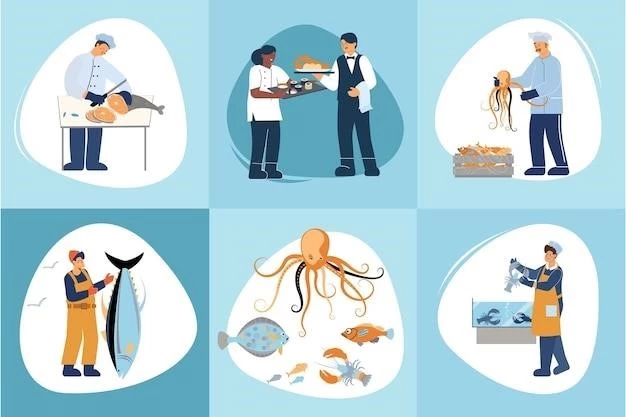Article Plan⁚ Disease ― Shellfish Poisoning
Overview of Shellfish Poisoning
Shellfish poisoning is a type of foodborne disease that occurs when you consume contaminated shellfish such as mussels, clams, oysters, scallops, or lobster․ These seafood items may harbor toxins that lead to various symptoms, including numbness, headache, nausea, vomiting, diarrhea, and confusion․ To prevent shellfish poisoning, it is essential to avoid or limit the consumption of shellfish from areas where algae blooms are prevalent or in low-income countries․
Types of Shellfish Poisoning
Shellfish poisoning can be categorized into various types, each caused by different toxins present in contaminated shellfish․ Some common types include Paralytic Shellfish Poisoning (PSP), Amnesic Shellfish Poisoning (ASP), Neurotoxic Shellfish Poisoning (NSP), and Diarrhetic Shellfish Poisoning․ It is crucial to understand the distinctions between these types to recognize the symptoms properly and seek appropriate treatment․

Paralytic Shellfish Poisoning (PSP)
Paralytic Shellfish Poisoning (PSP) is a serious illness caused by eating shellfish contaminated with toxins called saxitoxins․ These toxins can lead to paralysis, respiratory distress, and even death if consumed in sufficient quantities․ It is crucial to avoid consuming shellfish from areas prone to toxin-producing algae blooms to prevent PSP․ Seek medical attention immediately if you suspect PSP after consuming contaminated shellfish․
Amnesic Shellfish Poisoning (ASP)
Amnesic Shellfish Poisoning (ASP) is a rare yet serious illness caused by consuming shellfish contaminated with the marine biotoxin domoic acid․ This toxin can lead to symptoms such as nausea, vomiting, diarrhea, and even short-term memory loss․ If you suspect ASP after consuming shellfish, it is essential to seek medical help promptly to receive appropriate treatment and support․
Symptoms of Shellfish Poisoning
Shellfish poisoning can lead to various symptoms depending on the type of toxin present in the contaminated shellfish․ Common symptoms include numbness, tingling around the mouth, muscle weakness, headaches, nausea, vomiting, diarrhea, confusion, short-term memory loss, respiratory distress, and even paralysis․ It is essential to seek medical attention if you experience any of these symptoms after consuming shellfish to receive proper diagnosis and treatment․
Causes of Shellfish Poisoning
Shellfish poisoning can occur due to toxins produced by certain algae or dinoflagellates that contaminate shellfish such as mussels, clams, oysters, and scallops․ These toxins, like saxitoxins and domoic acid, can induce various types of shellfish poisoning, leading to harmful neurological and gastrointestinal effects when consumed․ Being aware of the sources of contamination and avoiding shellfish from affected areas is crucial in preventing shellfish poisoning․
Diagnosis and Treatment
Diagnosing shellfish poisoning often involves evaluating symptoms, understanding the individual’s shellfish consumption history, and, in some cases, conducting toxin analysis in shellfish samples․ Medical professionals may recommend supportive care such as intravenous fluids, activated charcoal, and specific antidotes depending on the type of shellfish poisoning identified․ Prompt medical attention is crucial if shellfish poisoning is suspected to ensure appropriate treatment and management of symptoms․
Prevention of Shellfish Poisoning
Preventing shellfish poisoning involves being cautious about consuming shellfish, especially bivalve mollusks like mussels, oysters, clams, and scallops that are more prone to toxin accumulation․ It is vital to obtain shellfish from reputable sources and avoid harvesting shellfish from potentially contaminated areas, particularly during algae blooms․ Proper cooking methods may reduce the risk of some toxins, but avoiding affected shellfish remains the best preventive measure against shellfish poisoning․

Shellfish Poisoning Outbreaks and Public Health Concerns
Shellfish poisoning outbreaks can arise when multiple individuals consume contaminated shellfish from the same marine source․ These outbreaks, particularly from toxins like saxitoxins and domoic acid, can lead to severe neurological effects, respiratory distress, and even death․ Public health authorities closely monitor shellfish toxicity levels to prevent widespread illness, and it is vital for individuals to heed advisories regarding contaminated shellfish to avoid potential health risks․
